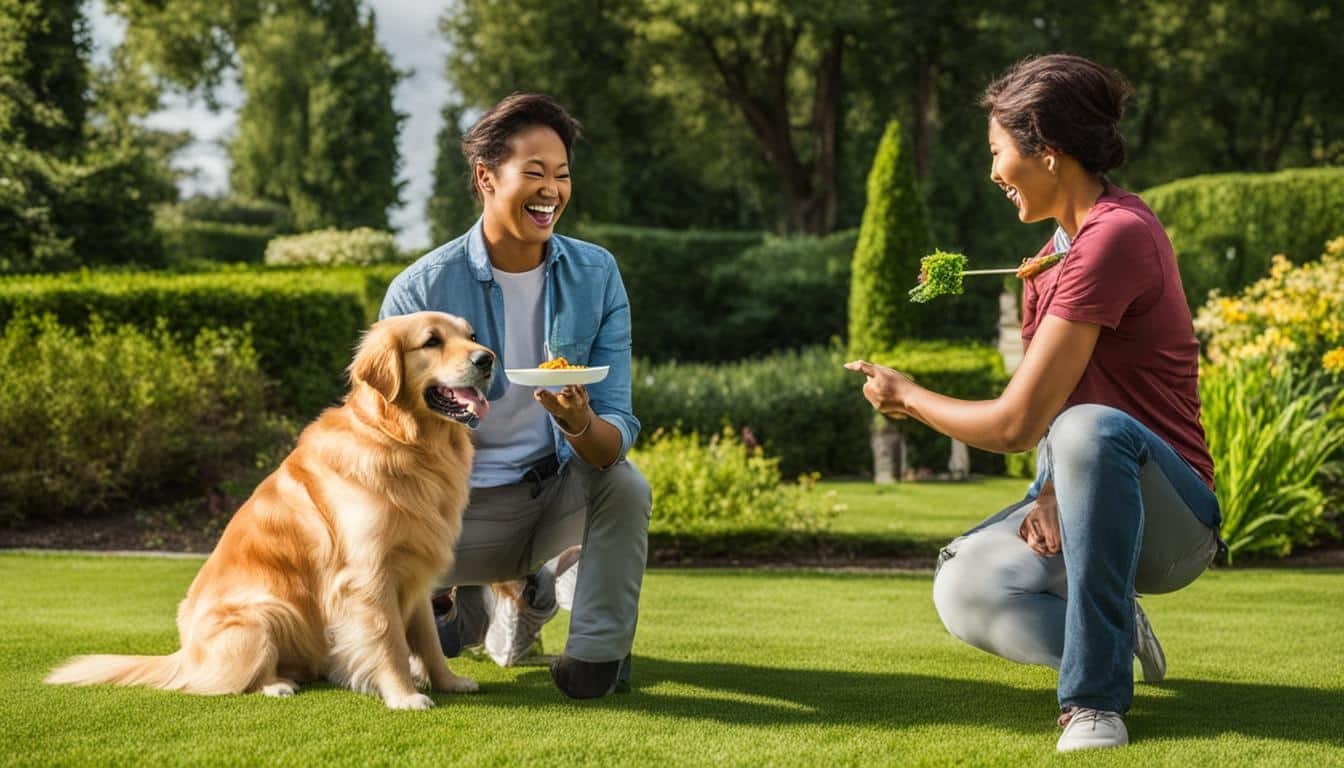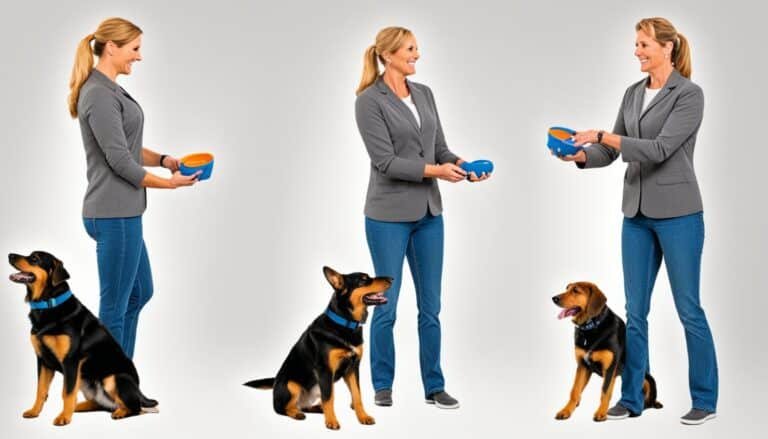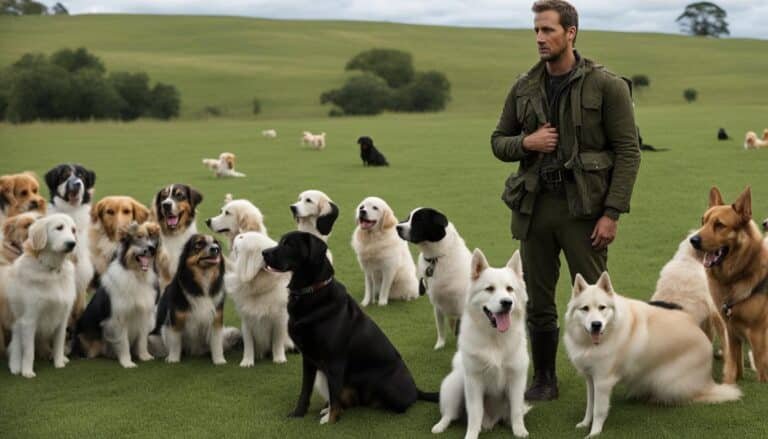How to Train a Dog to Understand Simple Commands
Training your dog to understand and respond to simple commands is essential for their safety, behavior, and the overall bond you share. Whether you’re a new dog owner or looking to brush up on your training skills, this article will provide you with easy-to-follow tips and techniques to help you navigate the world of dog training.
Imagine this scenario: You’re out for a stroll in the park with your furry friend, Max. The sun is shining, and the air is filled with the sound of birds chirping. As you leisurely walk along, Max’s leash suddenly slips out of your hand, and he takes off like a rocket, chasing after a squirrel. Panicked, you call out to him, hoping he’ll return. But instead, Max continues his pursuit, ignoring your pleas to come back.
Does this sound familiar? If so, don’t worry – you’re not alone. Many dog owners have experienced a moment of frustration when their beloved pet fails to respond to simple commands. That’s why it’s crucial to train your dog early on, teaching them the basics of obedience and communication.
In the following sections, we will cover the essential steps to get started with dog training, including teaching your dog to come when called, walking on a loose leash, sitting and staying on command, and even lying down and leaving objects alone. With patience, consistency, and effective training techniques, you’ll be well on your way to having a well-behaved and happy canine companion.
So, get ready to embark on this dog training journey and discover how to transform Max from a mischievous squirrel-chaser into an obedient and responsive companion. Let’s dive into the world of simple commands and unlock the potential of your four-legged friend!
Getting Started with Dog Training
Before you begin training your dog, it’s important to establish a foundation of positive reinforcement.
Positive reinforcement involves rewarding your dog for good behavior, using treats, praise, or play as incentives.
This approach is more effective than punishment or yelling, which can confuse and discourage your dog.
Remember to be patient and set realistic expectations, as training takes time and consistency.
Start training sessions when your puppy is around 8 weeks old, keeping them short (5-10 minutes) and always ending on a positive note.
Use high-value treats and plenty of praise to reinforce desired behaviors.
Teaching Your Dog to Come When Called
Teaching your dog to come when called is one of the most important commands you can teach them. It not only ensures their safety but also gives you peace of mind knowing that they will respond when you need them to. The key to successful recall training is consistency and positive reinforcement.
Start the training in a quiet, indoor area where there are minimal distractions. Say your dog’s name or the word “come” in a positive and encouraging tone of voice. As soon as they start moving towards you, reward them with a treat and plenty of praise. Repeat this process multiple times, gradually increasing the distance between you and your dog.
To make the training sessions more fun and challenging, add movement. You can walk backward or run away from your dog and encourage them to chase you. This will reinforce the idea that coming to you is an exciting and rewarding experience.
When training outside, especially in open spaces, it’s important to use a long leash to ensure your dog’s safety. This will give them some freedom to explore but still allow you to maintain control if needed.
Remember, the key to success is to always make coming to you a positive and rewarding experience for your dog. Avoid using negative reinforcement or punishment, as this can create fear and reluctance. Instead, focus on building a strong bond with your dog through effective training techniques and consistent practice.
Teaching Your Dog Loose-Leash Walking
Walking on a loose leash is another fundamental skill for your dog to learn. When you take your dog for a walk, you want them to walk calmly beside you without pulling or tugging. It creates a more enjoyable experience for both you and your furry companion.
To start teaching your dog loose-leash walking, begin by standing next to your puppy with a loose leash. Make sure there is no tension on the leash, allowing it to hang naturally. Reward your dog with treats or praise for standing or sitting nicely next to you.
Once your dog is comfortable with a loose leash, take small steps forward. If your dog walks beside you without pulling or getting ahead, be sure to reward them. Use treats or praise as positive reinforcement to encourage the behavior.
However, if your dog starts to pull or gets ahead of you, it’s important to redirect their attention and bring them back to your side. Change direction or call their name to regain their focus. When they return to your side, reward them for coming back to you.
As your dog becomes more proficient at walking on a loose leash, gradually increase the distance you walk and reduce the frequency of treats. Remember to always be patient and consistent with your dog’s training. Consistency is key to reinforcing the behavior and teaching them that loose-leash walking is a positive experience.
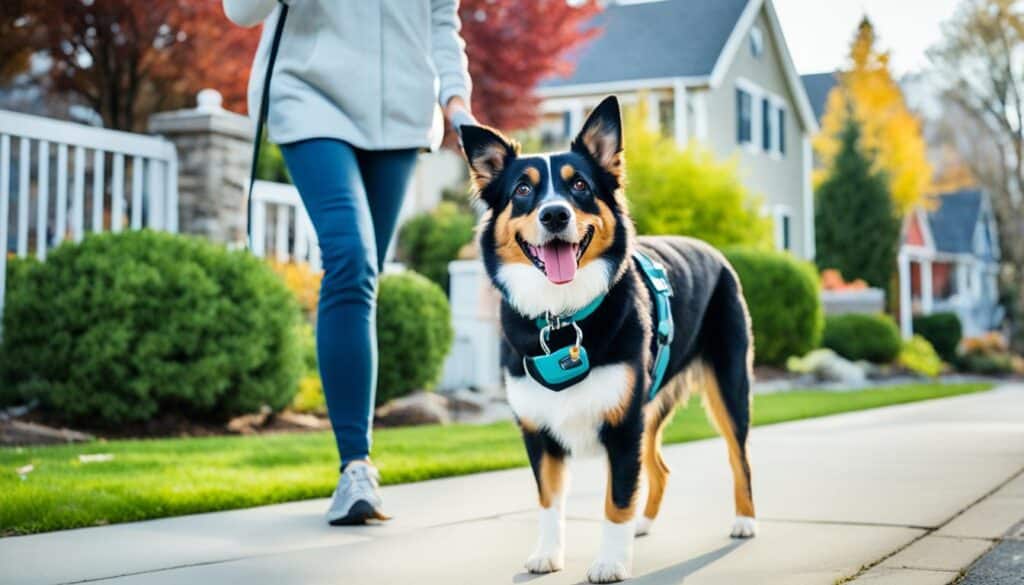
Tips for Teaching Loose-Leash Walking
- Choose a quiet and familiar area for training to minimize distractions.
- Use high-value treats to reward your dog for walking nicely on a loose leash.
- Practice short training sessions regularly to reinforce the behavior.
- Be patient and give your dog time to adjust to the concept of loose-leash walking.
- Consider using a front-clip harness or head halter for dogs that continue to pull.
By teaching your dog loose-leash walking, you’ll have more enjoyable walks together and strengthen the bond between you and your furry friend. With patience and consistent training, your dog will learn to walk calmly by your side, making every walk a pleasant experience.
Teaching Your Dog to Sit and Stay
Teaching your dog to sit and stay are two essential commands that serve as building blocks for more advanced training. These commands not only help to establish control and discipline but also ensure the safety of your dog. Follow these steps to effectively teach your dog to sit and stay:
- Capturing Method for Sit:
– Start by observing your dog’s natural behavior and reward them with treats whenever they naturally sit.
– As your dog sits, add the verbal cue “sit” so that they associate the action with the command.
– Repeat this process consistently until your dog begins to sit on command.
– Be patient and use positive reinforcement, such as treats and praise, to encourage your dog’s progress. - Luring Method for Sit:
– Hold a treat in your hand, close to your dog’s nose, and slowly move it upward and back, guiding them into a sitting position.
– As your dog begins to sit, say the command “sit” and reward them with the treat.
– Repeat this process several times, gradually reducing the physical prompt and relying more on the verbal cue.
– Once your dog consistently responds to the verbal cue, gradually phase out the use of treats, replacing them with verbal praise and petting. - Teaching the Stay Command:
– Start by giving the sit command to your dog.
– With your palm facing towards them, present it like a stop sign while saying “stay.”
– Take a small step back, and if your dog remains in the sit position, offer them a treat and plenty of praise.
– Gradually increase the distance and duration of your dog’s stay, always rewarding them when they successfully follow the command.
– Keep training sessions short and end them on a positive note to maintain your dog’s engagement and motivation.
Remember, teaching your dog commands takes time and consistency. Practice these exercises in different environments and gradually increase distractions to ensure your dog’s obedience in various situations. Use positive reinforcement techniques and show patience throughout the training process.
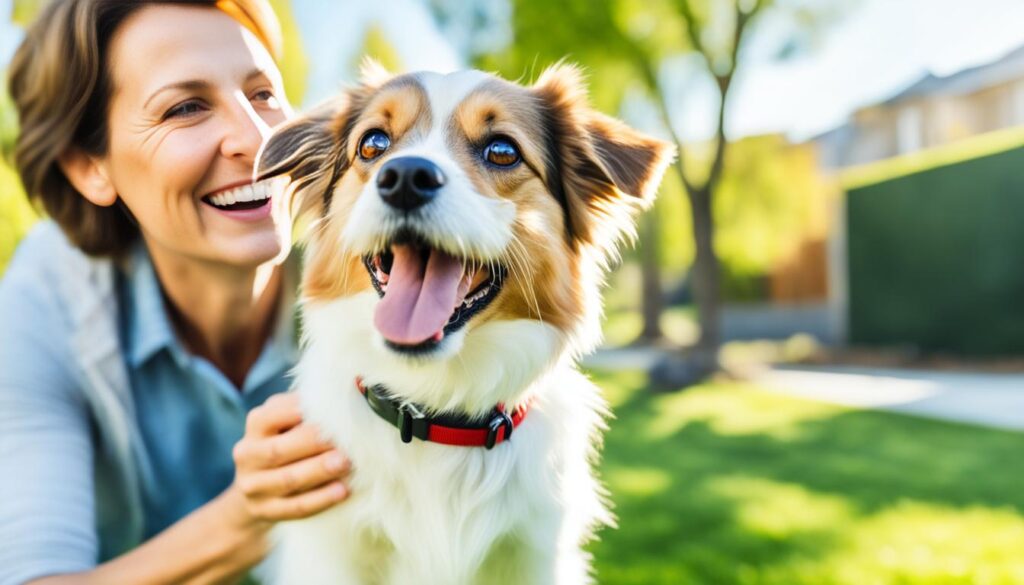
Teaching Your Dog to Lie Down and Leave It
When it comes to teaching your dog basic commands, it’s important to include the “lie down” and “leave it” commands in their training repertoire. These commands can be incredibly useful in various situations and help keep your dog well-behaved and safe.
To teach your dog to lie down, you can use a capturing or luring method similar to the one used for teaching them to sit. Whenever your dog naturally lies down, reward them and introduce the verbal cue “down” at the same time. With consistency, they will associate the command with the action, allowing you to easily ask them to lie down whenever needed.
Another valuable command is “leave it”, which can help prevent your dog from picking up dangerous or unwanted items. To train this command, start by showing your dog a treat in your closed fist. Say “leave it” and wait for your dog to lose interest and stop trying to get the treat. Once they do, reward them from your other hand. Gradually increase the difficulty by using more desirable objects and practicing in different environments.
Remember, teaching your dog these basic commands using positive reinforcement and consistency is key. By incorporating the “lie down” and “leave it” commands into their training, you are equipping your dog with the skills they need to be well-behaved and responsive in any situation.
